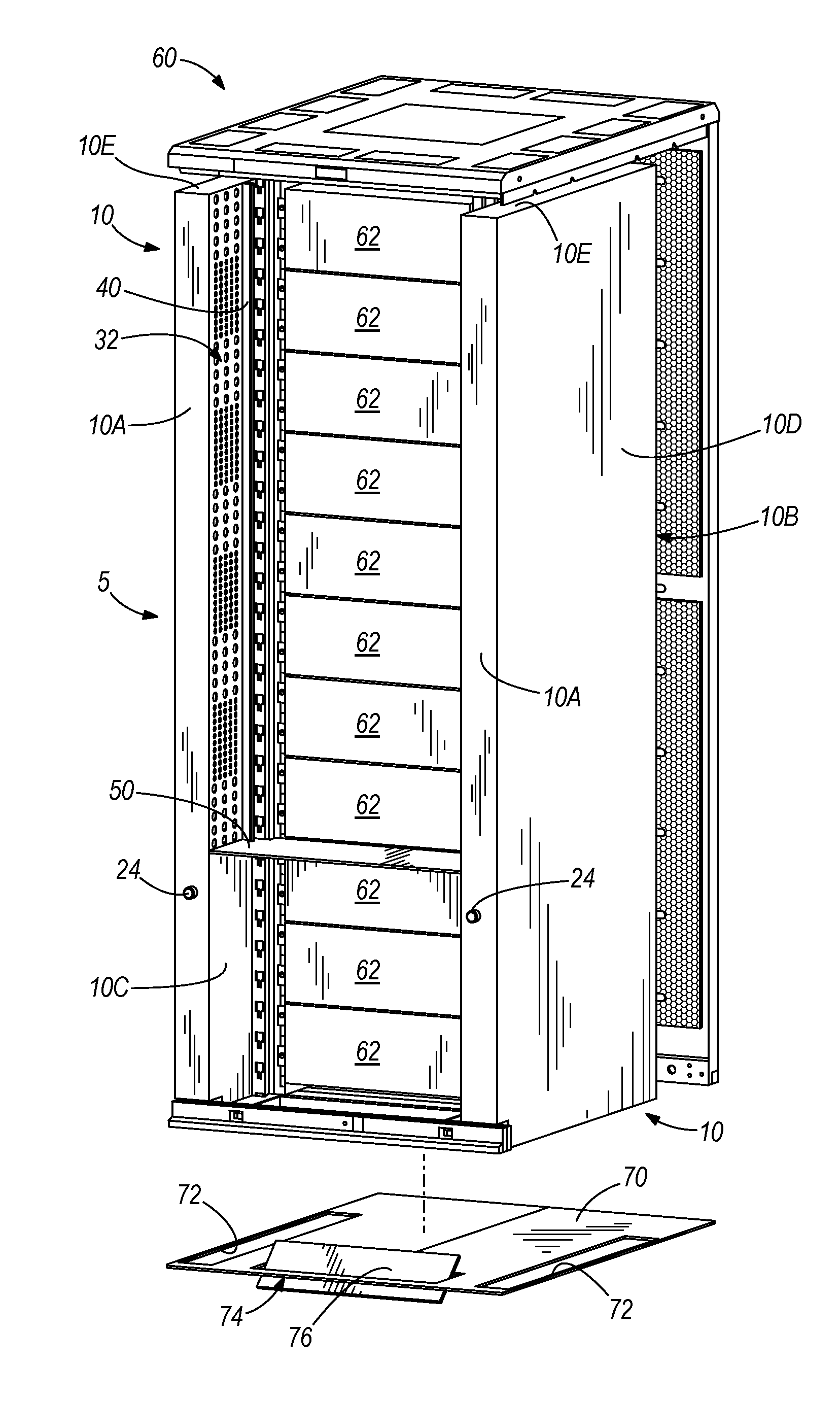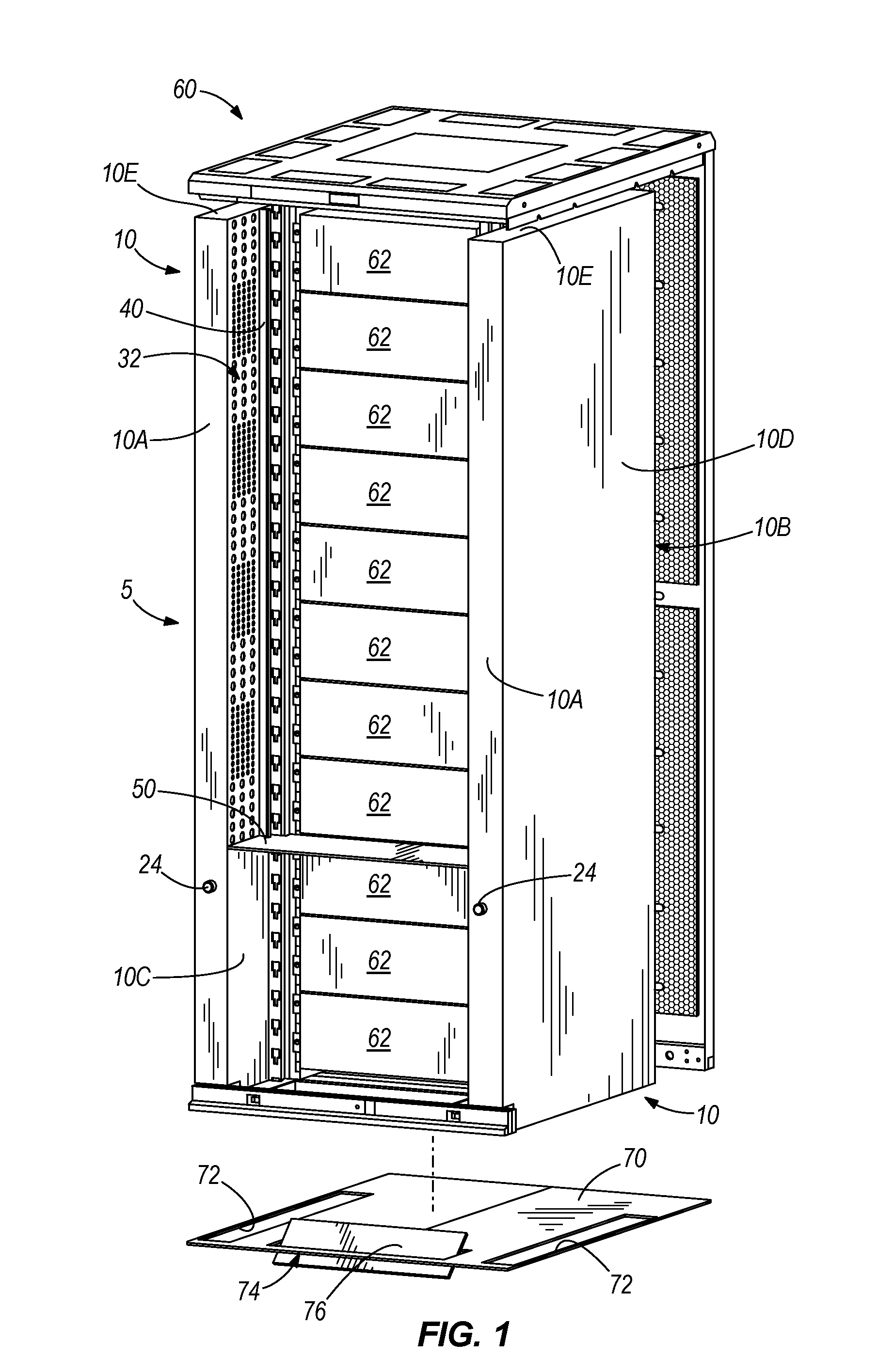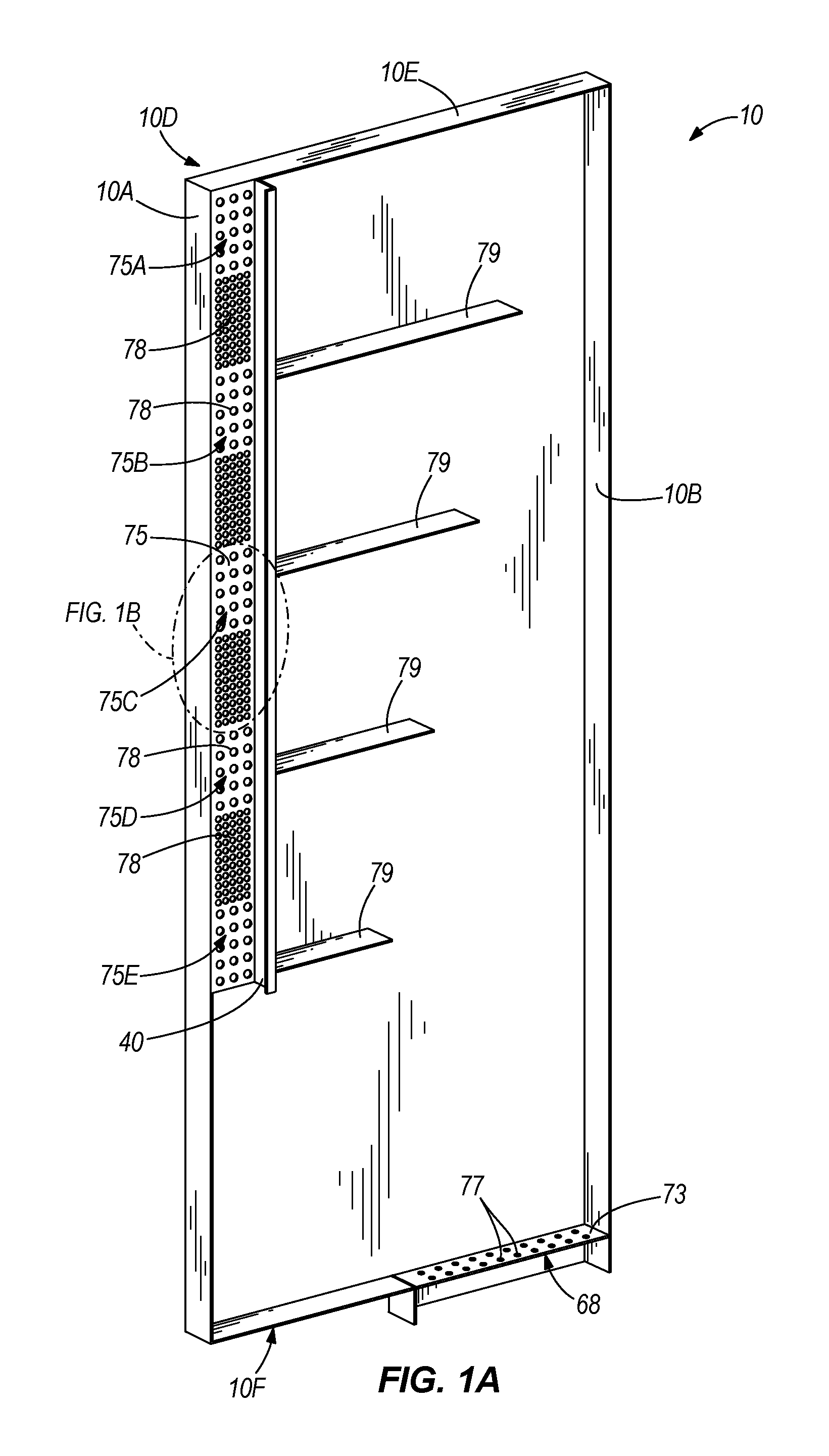Cooling System
a cooling system and electronic equipment technology, applied in the direction of instruments, furniture parts, electric apparatus casings/cabinets/drawers, etc., can solve the problems of inefficient cooling, inefficient cooling, and inefficient hot/cold aisle cooling of electronic equipment,
- Summary
- Abstract
- Description
- Claims
- Application Information
AI Technical Summary
Problems solved by technology
Method used
Image
Examples
Embodiment Construction
[0023]Referring to FIGS. 1-2, one example of a cabinet cooling system 5 is shown installed in an electronic equipment cabinet 60 (the front door and side panels of cabinet 60 are removed for clarity). As shown and described herein, cabinet 60 is a network cabinet, such as that shown and described in co-pending U.S. patent application Ser. Nos. 11 / 467,956, 11 / 538,884, 11 / 559,708, 11 / 623,358, 11 / 623,839, and 11 / 683,052, which are incorporated herein by reference. However, it will be understood that cooling system 5 can be used with any type of cabinet that is adapted to carry electronic equipment, such as servers.
[0024]In this example, cooling system 5 is generally made up of ducts 10, which are minor images of each others and shelf 50. Each duct 10 is generally rectangular and is formed by front wall 10A, back wall 10B, inside wall 10C, outside wall 10D, top wall 10E, and a bottom wall (not shown). As used herein, inside wall 10C is the wall of duct 10 that faces electronic equipment...
PUM
 Login to View More
Login to View More Abstract
Description
Claims
Application Information
 Login to View More
Login to View More - R&D
- Intellectual Property
- Life Sciences
- Materials
- Tech Scout
- Unparalleled Data Quality
- Higher Quality Content
- 60% Fewer Hallucinations
Browse by: Latest US Patents, China's latest patents, Technical Efficacy Thesaurus, Application Domain, Technology Topic, Popular Technical Reports.
© 2025 PatSnap. All rights reserved.Legal|Privacy policy|Modern Slavery Act Transparency Statement|Sitemap|About US| Contact US: help@patsnap.com



